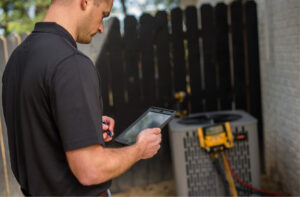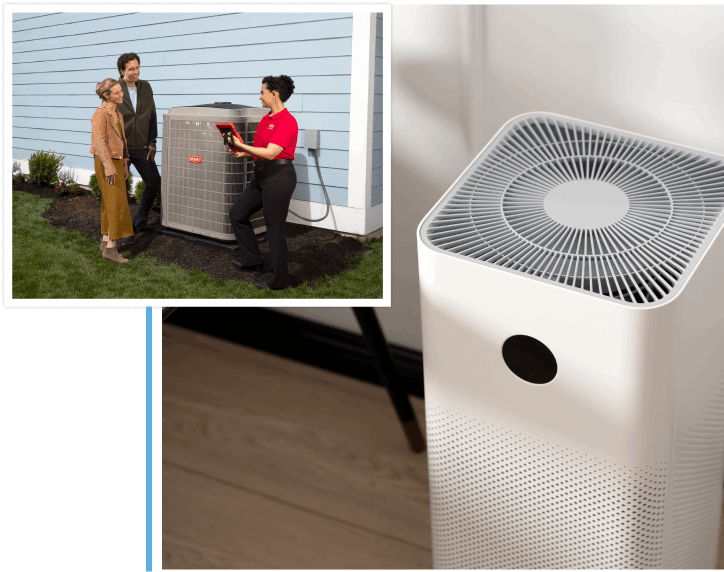No one wants to deal with a broken furnace or air conditioner. It’s inconvenient to schedule an emergency repair, not to mention potentially expensive. Fortunately, there’s an easy way to save time, money, and headaches—simply keep up with HVAC maintenance! In addition to scheduling professional cooling maintenance in the spring and heating maintenance in the fall, here are eight monthly maintenance tips that can help prevent costly HVAC repairs.
Replace the HVAC Filter
The air filter traps airborne debris that blows through the ductwork. Over time, it becomes clogged with hair, fibers, dust, and other debris. Eventually, this restricts airflow and puts a greater strain on the blower motor. To prevent this, change the filter every 30 to 90 days or as recommended by the manufacturer.
Keep Supply and Return Registers Open
In addition to keeping the filter clean, promote good airflow by keeping all the supply and return registers open and unobstructed. Even if you have unused rooms, it’s important to keep at least 80% of your home’s vents open to maintain proper airflow balance and prevent damaging the HVAC equipment.
Use a Smart Programmable Thermostat
You can save money and reduce wear and tear on the system by using a programmable thermostat. This allows you to program setback periods while you’re away or sleeping, with recovery periods that restore a comfortable temperature before you arrive home or wake up.
Clean the Condenser Coils Often
The outdoor unit, known as the condenser, is prone to collecting dust, cobwebs, grass clippings, and other debris. Hose the unit down every month during the summer to promote more efficient heat exchange. If you notice any bent fins, straighten them out with a fin comb as well.
Trim Back Vegetation and Long Grass
Shrubs should stay at least 12 inches away from the condensing unit so heat can exhaust more effectively. Also, keep this distance in mind if you plan to install a screen around the AC for aesthetic purposes.
Check the Condensate Drain Line
Air conditioners don’t just remove heat from your home—they also dehumidify the space. The moisture collected from the air flows into the condensate pan and drains away. High-efficiency furnaces also generate slightly acidic condensate as a byproduct of their operation. If an obstruction blocks the condensate drain line, the pan may fill and potentially overflow. A quick monthly check ensures this never happens.
Check the Burner Flame
Furnaces that run on natural gas or propane produce heat from a flame, which should glow steady and blue. If you notice a flickering yellow or orange flame, this could indicate a combustion issue. In this case, the furnace not only has to work harder to heat your home, but it could also be contaminating the indoor air with carbon monoxide. Turn off the furnace right away and call for an emergency heating repair.
Test All Carbon Monoxide Detectors
Every home should be outfitted with CO detectors on every floor, including outside sleeping areas. If your furnace or another combustion appliance malfunctions and emits too much carbon monoxide gas into your home, these detectors will alert you of the hazard. Make sure they’re working properly by testing them once a month and changing the batteries once a year.
Schedule a Professional HVAC Maintenance Service
While DIY maintenance goes a long way toward preventing costly repairs, only a trained technician can perform an in-depth inspection, cleaning, and safety check to keep the system running well for years to come. AIS Heating & Air Conditioning is your source for reliable, affordable HVAC maintenance in Fremont. We can service your heating and cooling system each once a year, with visits catered to the type and age of your equipment.
To learn more, or to schedule HVAC maintenance in the Bay Area, please contact us today at (510) 792-4328.





